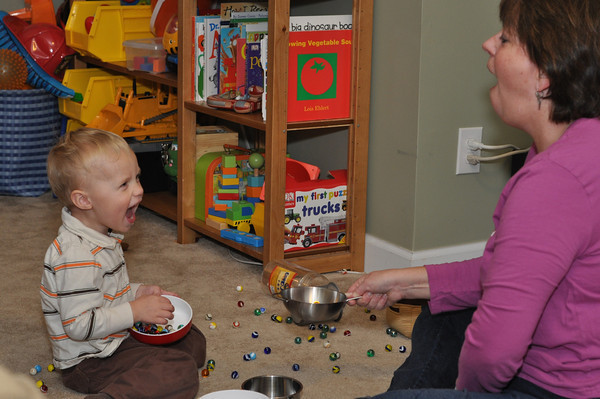
A new study by University of North Carolina at Chapel Hill researchers finds that a collection of simple strategies used by parents can lead to significant improvements in one-year-olds at risk for autism spectrum disorder (ASD).
In the study, published in Autism Research and Treatment, a group of UNC faculty from the departments of Allied Health Sciences, Psychiatry and Psychology followed 18 families with a one-year-old child at risk for ASD. They compared the effects of a parent-coaching, home-based intervention called “Adapted Responsive Teaching” (ART) versus referral to early intervention and monitoring.
“We identified families with one-year-old infants in a community sample who were at-risk for ASD, and successfully recruited them into our intervention study prior to an age where full-blown autism symptoms are typically evident. For many families, we facilitated access to early intervention and improved their child’s outcomes.” said Grace Baranek, PhD, lead author of the study and an autism researcher with the Program for Early Autism, Research, Leadership and Service (PEARLS) in the Department of Allied Health Sciences at the UNC School of Medicine.
Here is one example of how ART is sometimes used. Some one-year-olds at risk for ASD do not respond when someone else tries to get their attention by calling their name or by showing them something interesting, and they may not play “back-and-forth” social interaction games such as peek-a-boo. In such a situation the parent, working with an ART interventionist, begins to imitate the child’s actions and communications. The child then begins to interact with the parent to see if the parent will imitate him or her again. As the intervention continues, the parent is able keep the child engaged in “back-and-forth” social interactions for several exchanges at a time.
” ‘Imitate your child’ is just one example of an ART intervention strategy that is targeted to address one of 12 pivotal behaviors in our study,” Baranek said. “Each child has different strengths and weaknesses, so the intervention is individualized to the needs of the child, and necessarily varies across families.”
“This is one of the most rewarding interventions I’ve ever used,” said Linn Wakeford, the Intervention Coordinator for the study. “It’s amazing to watch parents learn to engage their children more fully in play and social interactions, and in turn, to see the children flourish in response to these strategies!”
Story Source:
The above story is based on materials provided by University of North Carolina School of Medicine. Note: Materials may be edited for content and length.
Journal Reference:
- Grace T. Baranek, Linda R. Watson, Lauren Turner-Brown, Samuel H. Field, Elizabeth R. Crais, Linn Wakeford, Lauren M. Little, J. Steven Reznick. Preliminary Efficacy of Adapted Responsive Teaching for Infants at Risk of Autism Spectrum Disorder in a Community Sample. Autism Research and Treatment, 2015; 2015: 1 DOI: 10.1155/2015/386951
